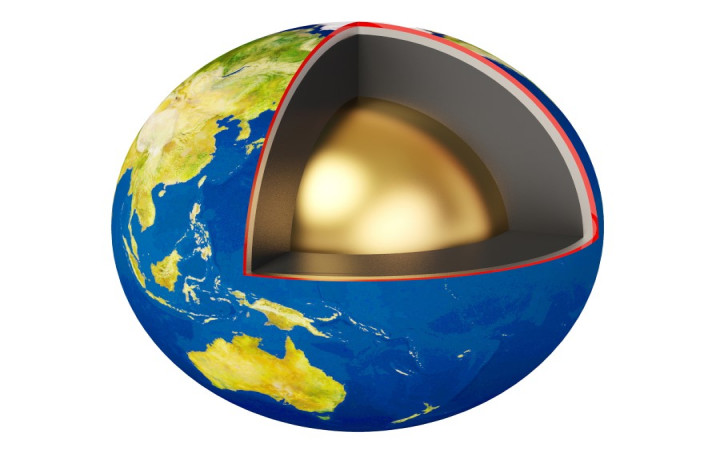Today’s Wonder of the Day was inspired by Victor from AL. Victor Wonders, “what are the physical and chemical properties of the mantle?” Thanks for WONDERing with us, Victor!
What's under your feet? Depending upon where you're currently standing, it could be dirt, rock, or grass. But what's really under your feet? If you were to dig straight down, what would you find? And how far could you dig? Could you really dig a hole to China?
Scientists who study Earth and its composition will tell you that Earth is made up of three main layers. We human beings live on the solid outer layer called the crust.
Under the crust lies the mantle, which is made up of hot magma and other semi-solid rocks and minerals. Tectonic activity in the mantle often results in noticeable changes in the crust we live on, including volcanic eruptions and earthquakes.
Beneath the mantle, you'll find the core. Earth's core is the deepest, hottest layer, and it's made up of two layers itself: the outer core which borders the mantle and the inner core, which is a ball-shaped layer made almost entirely of metal.
The outer core is about 1,400 miles thick, and it's made mostly of a combination (called an alloy) of iron and nickel, along with small amounts of other dense elements like gold, platinum, and uranium. These metals can, of course, be found on the surface of Earth in solid form. In the outer core, they're in a very hot liquid form. How hot? Try between 7,000-9,000º F!
The inner core, which is about 750 miles thick, is made primarily of iron. Unlike the outer core, the inner core is mostly solid. Although the iron in the inner core is even hotter (10,000º F or more — as hot as the surface of the Sun!) than the outer core, the intense pressure from the rest of the planet is so great that the iron cannot melt.
Billions of years ago when Earth was formed, all the heaviest substances sank toward the middle of the developing planet. Lighter, less dense substances stayed closer to the crust. That's why the inner core is comprised of some of the heaviest materials on Earth.
With a gigantic ball of solid metal as its core, all of Earth is magnetic. Scientists believe Earth's powerful magnetic field is controlled by the liquid outer core. Earth's magnetic field protects us from all sorts of charged particles floating around the solar system, including many of the Sun's harmful rays.
Although it might be hard to imagine. scientists believe the metals in Earth's core are in constant motion. Some scientists even believe Earth's inner core rotates faster than the rest of the planet. Movement within Earth's liquid outer core occasionally changes the location of Earth's magnetic North and South Poles.




